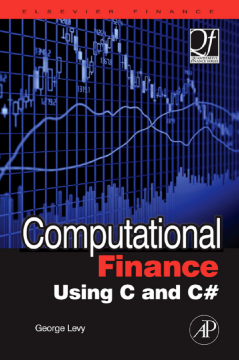
Additional Information
Book Details
Abstract
Computational Finance Using C and C# raises computational finance to the next level using the languages of both standard C and C#. The inclusion of both these languages enables readers to match their use of the book to their firm’s internal software and code requirements. The book also provides derivatives pricing information for equity derivates (vanilla options, quantos, generic equity basket options); interest rate derivatives (FRAs, swaps, quantos); foreign exchange derivatives (FX forwards, FX options); and credit derivatives (credit default swaps, defaultable bonds, total return swaps).
This book is organized into 8 chapters, beginning with an overview of financial derivatives followed by an introduction to stochastic processes. The discussion then shifts to generation of random variates; European options; single asset American options; multi-asset options; other financial derivatives; and C# portfolio pricing application. The text is supported by a multi-tier website which enables purchasers of the book to download free software, which includes executable files, configuration files, and results files. With these files the user can run the C# portfolio pricing application and change the portfolio composition and the attributes of the deals.
This book will be of interest to financial engineers and analysts as well as numerical analysts in banking, insurance, and corporate finance.
- Illustrates the use of C# design patterns, including dictionaries, abstract classes, and .NET InteropServices.
George Levy's first book, Computational Finance, was chosen as a Top Ten Financial Engineering title for 2003-04 by Financial Engineering News
“Think of Baxter and Rennie, add the pricing models from Wilmott and, to illustrate each model, Levy's own Numerical Recipes in C and C#. Levy's book is written in precise mathematical language, covering all types of derivative products and illustrating the state-of-the-art resolution methods for pricing. As such, it is set to become a classic amongst serious quants.
- Professor Carol Alexander, Chair of Risk Management and Director of Research, ICMA Centre, Business School, The University of Reading, UK
